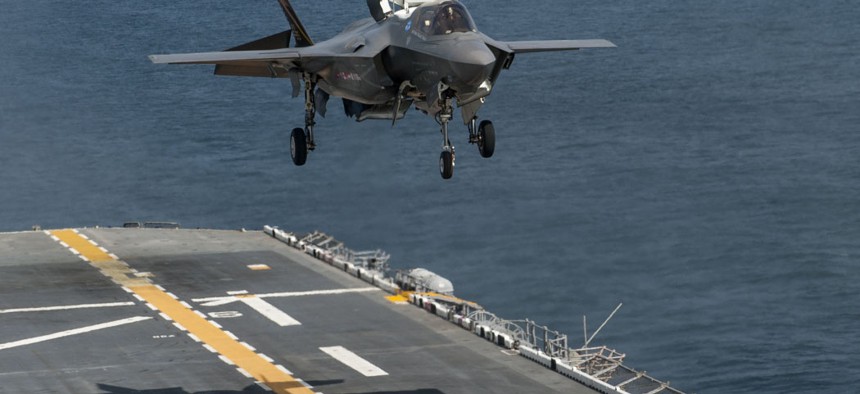How lasers could make the F-35 more effective
A Marine general says lasers would make the costly fighter more agile by reducing munitions weight and fuel requirements.
As the Air Force completed a month-long series of F-35 weapon tests, the Marine Corps is lobbying to add laser weapons to its version of the costly multi-role fighter.
Lt. Gen. Robert Walsh, the Marine Corps' deputy commandant of combat development and integration, told reporters this week that directed energy weapons would lighten the fighter aircraft's load by reducing the amount of "kinetic ordnance" and fuel the Marine Corps variant of the F-35 would have to carry.
The trick will be miniaturizing current lasers to fit in aircraft while ramping up power output. Walsh said the Marines and the Office of Naval Research recently tested a 10-kilowatt laser mounted on a vehicle. A future test of a mobile laser would boost the power to 30 kilowatt, he said.
The ONR research focuses on free electron and solid-state fiber lasers, along with beam control. These and other service efforts seek to boost the power of laser weapons as an alternative to expensive kinetic weapons such as missiles for use against "low-value targets" such as drones.
The Navy deployed a 30-kilowatt system aboard the USS Ponce in the Persian Gulf in 2014 known as the laser-mounted weapon, or LaWS. The service reportedly is testing a 150-kilowatt laser that could take on targets other than small drones.
The Marine Corps is expected to be the first service to deploy the F-35B, a short takeoff and vertical landing variant of the joint strike fighter, built by Lockheed Martin Corp. The Marines said its version of the F-35 Joint Strike Fighter had achieved initial operating capability last summer. The Air Force followed with a similar declaration last month.
The F-35 is the most expensive U.S. weapons program ever, with a unit cost for the Air Force version estimated at $98 million, and $104 million each for the Marine’s carrier-based F-35B, according to the Lockheed Martin. The unit cost estimates do not include the engine.
The Army and Marines also have been working on vehicle-based lasers that could be used to counter drones.
NEXT STORY: Air Force orders upgrades for Reaper drone





